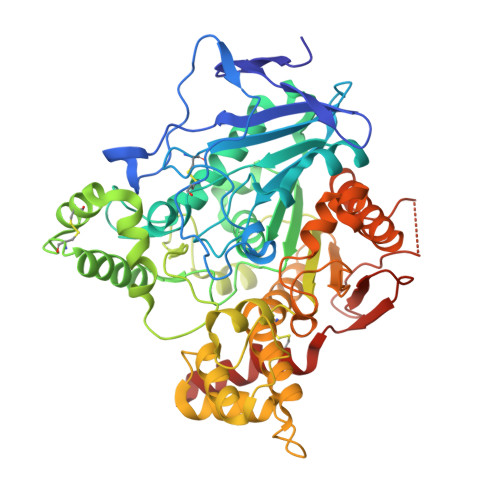Shoot-and-Trap: Use of Specific X-Ray Damage to Study Structural Protein Dynamics by Temperature-Controlled Cryo-Crystallography.
Colletier, J.P., Bourgeois, D., Sanson, B., Fournier, D., Sussman, J.L., Silman, I., Weik, M.(2008) Proc Natl Acad Sci U S A 105: 11742
- PubMed: 18701720
- DOI: https://doi.org/10.1073/pnas.0804828105
- Primary Citation of Related Structures:
2VJA, 2VJB, 2VJC, 2VJD, 2VT6, 2VT7 - PubMed Abstract:
Although x-ray crystallography is the most widely used method for macromolecular structure determination, it does not provide dynamical information, and either experimental tricks or complementary experiments must be used to overcome the inherently static nature of crystallographic structures. Here we used specific x-ray damage during temperature-controlled crystallographic experiments at a third-generation synchrotron source to trigger and monitor (Shoot-and-Trap) structural changes putatively involved in an enzymatic reaction. In particular, a nonhydrolyzable substrate analogue of acetylcholinesterase, the "off-switch" at cholinergic synapses, was radiocleaved within the buried enzymatic active site. Subsequent product clearance, observed at 150 K but not at 100 K, indicated exit from the active site possibly via a "backdoor." The simple strategy described here is, in principle, applicable to any enzyme whose structure in complex with a substrate analogue is available and, therefore, could serve as a standard procedure in kinetic crystallography studies.
Organizational Affiliation:
Laboratoire de Biophysique Moléculaire and Laboratoire de Cristallogenèse et de Cristallographie des Protéines, Centre National de la Recherche Scientifique, Université Joseph Fourier, F-38027 Grenoble, France. jacques@colletier.co


















